 by our College Data Analytics Team
by our College Data Analytics TeamMIU total enrollment is approximately 2,015 students. 331 are undergraduates and 818 are graduate students.
Male/Female Breakdown of Undergraduates
The full-time MIU undergraduate population is made up of 74% women, and 26% men.
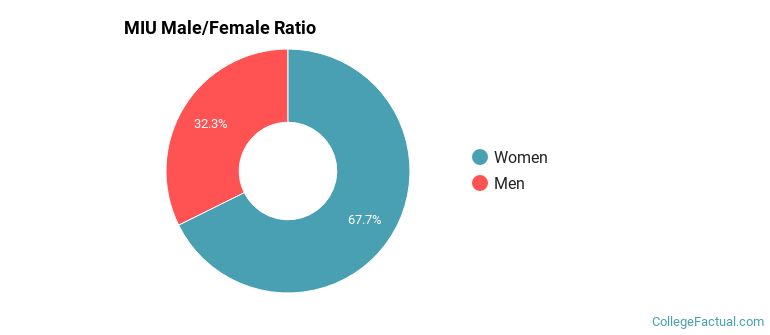
For the gender breakdown for all students, go here.
MIU Racial/Ethnic Breakdown of Undergraduates

| Race/Ethnicity | Number |
|---|---|
| White | 141 |
| Unknown | 98 |
| Hispanic | 40 |
| Black or African American | 32 |
| Asian | 7 |
| International | 6 |
| Multi-Ethnic | 5 |
| Native Hawaiian or Pacific Islander | 0 |
See racial/ethnic breakdown for all students.
Male/Female Breakdown of Graduate Students
About 21% of full-time grad students are women, and 79% men.
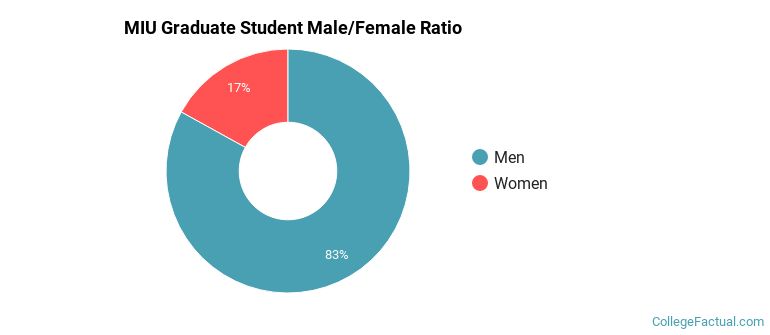
For the gender breakdown for all students, go here.
MIU Racial-Ethnic Breakdown of Graduate Students
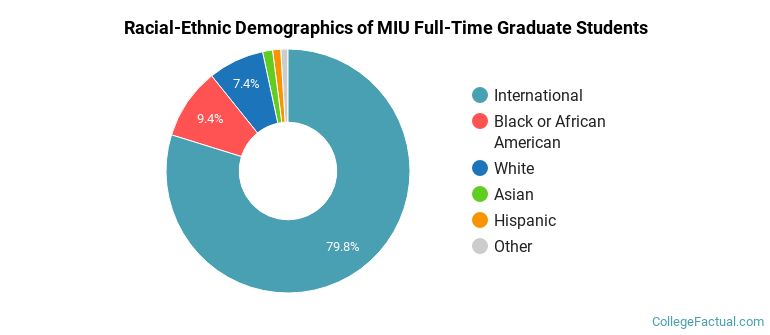
| Race/Ethnicity | Number |
|---|---|
| International | 570 |
| Black or African American | 85 |
| White | 72 |
| Unknown | 57 |
| Asian | 19 |
| Hispanic | 11 |
| Multi-Ethnic | 3 |
| Native Hawaiian or Pacific Islander | 0 |
See racial/ethnic breakdown for all students.
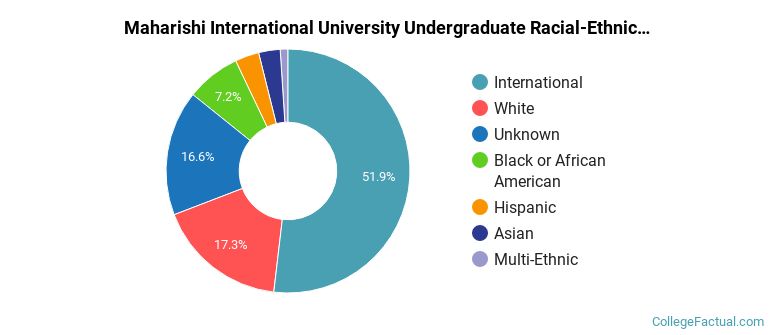
| Race/Ethnicity | Number |
|---|---|
| International | 858 |
| White | 491 |
| Unknown | 297 |
| Black or African American | 173 |
| Hispanic | 95 |
| Asian | 77 |
| Multi-Ethnic | 15 |
| Native Hawaiian or Pacific Islander | 1 |

There are approximately 929 female students and 1,086 male students at MIU.
MIU ranks 311 out of 2,183 when it comes to geographic diversity.
84.21% of MIU students come from out of state, and 9.52% come from out of the country.

The undergraduate student body is split among 13 states (may include Washington D.C.). Click on the map for more detail.
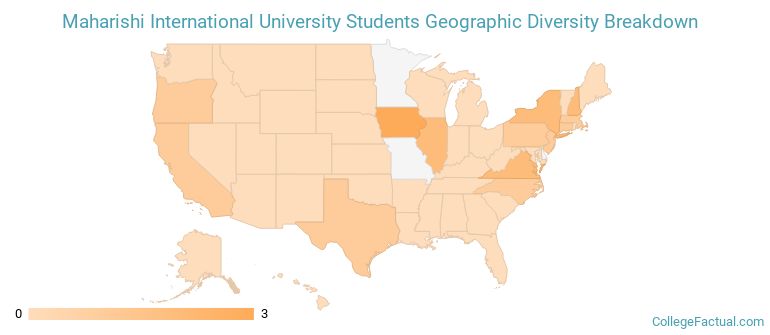
| State | Amount |
|---|---|
| Iowa | 3 |
| Illinois | 2 |
| New Hampshire | 2 |
| New York | 2 |
| Virginia | 2 |
Students from 80 countries are represented at this school, with the majority of the international students coming from Nepal, Ethiopia, and China.
Learn more about international students at MIU.
A traditional college student is defined as being between the ages of 18-21. At MIU, 3.34% of students fall into that category, compared to the national average of 60%.

| Student Age Group | Amount |
|---|---|
| 25-29 | 651 |
| 30-34 | 389 |
| 35 and over | 338 |
| 22-24 | 162 |
| 20-21 | 35 |
| 18-19 | 20 |
| Under 18 | 0 |
Footnotes
*The racial-ethnic minorities count is calculated by taking the total number of students and subtracting white students, international students, and students whose race/ethnicity was unknown. This number is then divided by the total number of students at the school to obtain the racial-ethnic minorities percentage.
References
Department of Homeland Security Citizenship and Immigration Services
Image Credit: By Wiki User: Keithbob under License